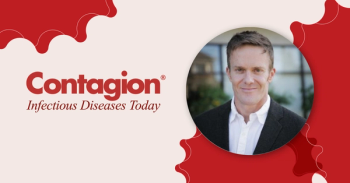
Practice Pearls for Treatment of Respiratory Infections
Tina Tan, MD; Wendy Wright, DNP, ANP-BC, FNP-BC, FAANP, FAAN, FNAP; Priya Nori, MD; Jacinda Abdul-Mutakabbir, PharmD; and Kevin Michael Reiter, MD, PA, provide key takeaways from the discussion on the treatment of respiratory viral infections.
Episodes in this series

Tina Tan, MD: This has been an incredibly productive conversation. Are there any parting comments you would like to give to the audience to help them look at the different viral infections circulating, and the testing and treatment that can be done? JAM [Jacinda], since you’re on, I’ll start with you.
Jacinda Abdul-Mutakabbir, PharmD: The first thing I would say is testing is important, and we need to relay this to our patients, but we must also develop models to make the testing available and accessible to each and every person. Health equity, testing equity, and vaccine equity should be at the forefront of our minds. I think the vaccination process with COVID-19 can give us great ideas and has created a great infrastructure for seeing how it is that we can make these things equitable. I hope that’s something we consider and prioritize as we move forward.
Tina Tan, MD: Excellent advice. Wendy?
Wendy Wright, DNP, ANP-BC, FNP-BC, FAANP, FAAN, FNAP: I think that science has brought us lots of tools for our toolbox now. I’m grateful that I have those tools and I’m able to use them. I think we should test early and test often. I think the whole point of the test and treat program for COVID-19 needs to be taken, as Priya said, and move to flu and other communicable illnesses as well. I also believe that we’re living in a time where there’s vaccine fatigue and there’s vaccine hesitancy across the board. Things used to be really easy. I would tell a mom, this is what your kid gets, and it was, “OK. If that’s what they need, give it to them.” Now, it’s more of a dialogue. Take a breath, ask them their concerns, and come back to them with your answers to those concerns. I have families who have come to me who have said, “I’m never vaccinating,” and their kids are now 100% vaccinated. JAM hit the nail on the head. Don’t give up. Give yourself some grace, and test early, test often, and use the tools that are available for those people who are truly at risk for these illnesses. They’re there, and they’re not going away.
Tina Tan, MD: Thank you. Priya?
Priya Nori, MD: Just as Wendy said, for anybody in the federal government or in biotechnology who may be listening, please try to get home testing for all of these viruses off the ground. I think it can be hugely paradigm shifting. Not only that, but we have to make sure that treatments are available for all of them, for influenza, COVID-19, and RSV [respiratory syncytial virus]. Currently, that’s a void. We don’t have great treatments at all for RSV, and so we are sort of behind the ball on that. Then something that wasn’t mentioned today, but I think we would all agree with, is the fact that we are in for a rough road ahead. It’s already started, but if we can keep our eye on a couple of preventive measures like vaccinations and masks, we will be, I think, in much better shape to get through the next few weeks to months. That’s what I would have to say as my parting shots.
Tina Tan, MD: Thank you. Kevin?
Kevin Michael Reiter, MD, PA: I think for me, 2 things that I always consider are the art and the science of medicine, and taking and treating your patient, the whole patient. Not just a patient who’s in front of you, but what does that patient do outside of the office? When it comes to testing and treating, how does that test and treatment option influence them individually? How does it influence their job? How does it influence their ability to earn an income? How does it influence their ability to keep their family safe, and their friends safe, and their colleagues safe? And if they’re a health care worker, how do they keep their patients safe? I think when you take all of that into consideration, it echoes the message of test early and take treatment into account, not just for that individual but also for the big picture. I preach that message to my provider team daily. Hopefully, that resonates with the listeners here.
Tina Tan, MD: I think all of your advice is wonderful. I think it’s going to provide the listeners with the tools they need to give the best care to their patients. I want to thank each and every one of you. You guys have been fantastic. I also want to thank the people watching this ContagionLive® Peer Exchange. If you enjoyed the content, please subscribe to the newsletter to receive information on upcoming peer exchanges and other great content right in your inbox.
Transcript edited for clarity
Newsletter
Stay ahead of emerging infectious disease threats with expert insights and breaking research. Subscribe now to get updates delivered straight to your inbox.
























































































































































































































































































